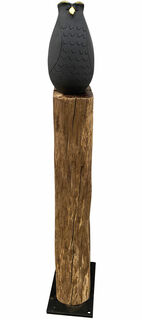Animal Sculptures
Animal Sculptures - A Classical Subject of Sculpture Art
Animals have always held an important place in art. For example, a sculpture depicting a lion-human hybrid is said to be over 32,000 years old. Throughout the millennia, the animal world has established itself as a popular subject for sculpture. The sculptures often depict animals from people's immediate everyday lives, such as pets and farm animals, as well as domestic fauna. More exotic animal motifs only became possible only through travels to distant countries, with the introduction of zoos and animal encyclopaedias, and the invention of photography. The art of sculpture has produced innumerable variations in the representation of animal sculptures. They range from precise anatomical studies to humorous and comic-like versions, as well as expressive and abstract forms. As a work of art, animals are often shown as free-standing figures, but they can also be associated with human beings, such as the horses in classical equestrian statues or quadrigae. The sizes range from miniature to monumental animal statues. For example, life-size sculptures of animals were placed in front of temples or houses, and many works of art with animal motifs were designed for public spaces. However, animal sculptures are also very popular as decorative objects for your own home, for example, as several animals as bronze figures. Other common motifs for small sculptures include cats, dogs or even horses.
Animal Sculptures Often Serve as Symbols
Throughout human history, animal sculptures have served various purposes. For example, they had special significance in antiquity. The Egyptians saw many animals as the incarnation of their gods and, therefore, crafted animal sculptures in their honour for various occasions. Numerous effigies, such as the falcon (Horus), the cat (Bastet) or the jackal (Anubis), were part of the Egyptians' religious culture as funerary offerings. However, animal sculptures did not only serve cultic purposes. There are many other contexts in which animals are used as symbols. For example, they can represent certain character traits or qualities, such as the bull representing strength and aggressiveness or a swan representing beauty. Some animal sculptures have even made it into politics and economics, such as the bull and bear, symbolising activities in the stock markets.






























